Stardew Valley Winter: Conquer Your First Frosty Season with Ease!
Winter is the fourth season in Stardew Valley and might be the most challenging season for newcomers. Many players have asked me how to develop during their first winter. In this tutorial, I’ll provide a simple explanation for those interested.
Developing the Greenhouse, Desert, and Ginger Island
Generally, experienced players focus on developing the Greenhouse, Desert, and Ginger Island during winter. The Greenhouse and Ginger Island allow planting all year round, while the Desert Mine provides essential ore resources. For new players, it’s important to plan ahead and aim to complete the Community Center Bundle or Joja Community Development Form before winter arrives.
Completing the Community Center Bundle or Joja Community Development Form
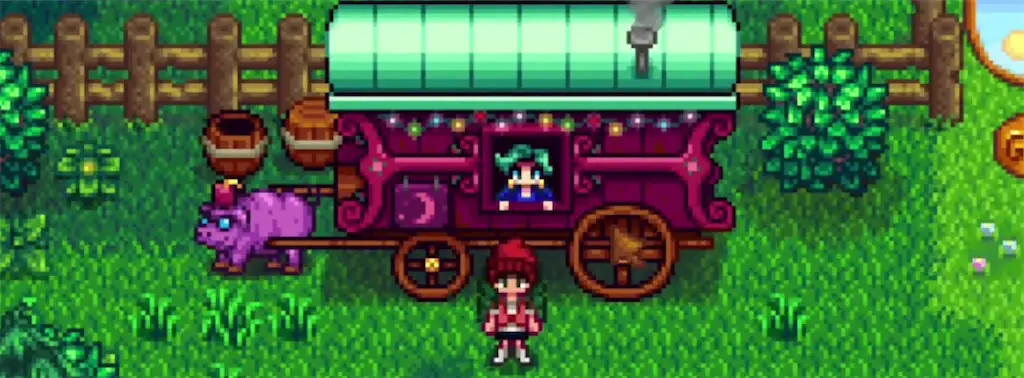
If you choose the Community Center route, be prepared to put in some effort. Aside from the elusive Red Cabbage, most of the required items can be obtained with proper planning. Red Cabbage can be found in the Traveling Cart on Fridays and Sundays(if you are lucky enough). After completing the Community Center, Willy will send a letter unlocking the back door of the Fish Shop.
Unlocking the Greenhouse and Ginger Island
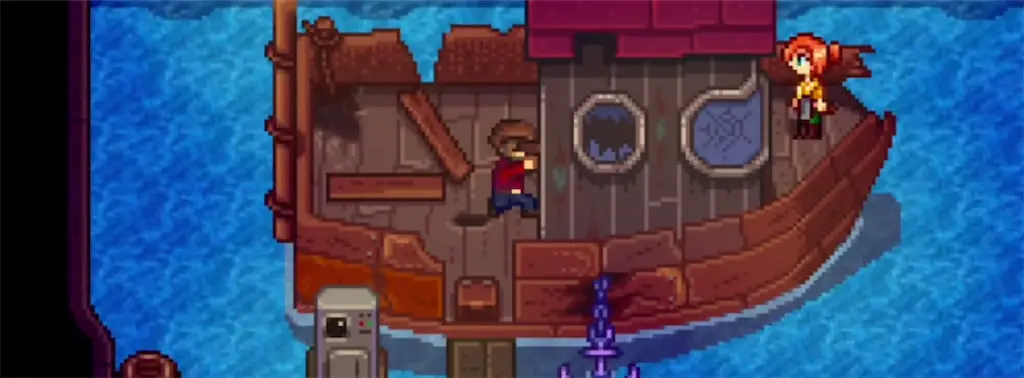
To fix the Old Boat and travel to Ginger Island, you’ll need 200 Hardwood, 5 Iridium Bars, and 5 Battery Packs. Stock up on these materials beforehand, so when winter arrives, you can buy seeds in the Desert and plant them smoothly in the Greenhouse and on Ginger Island.
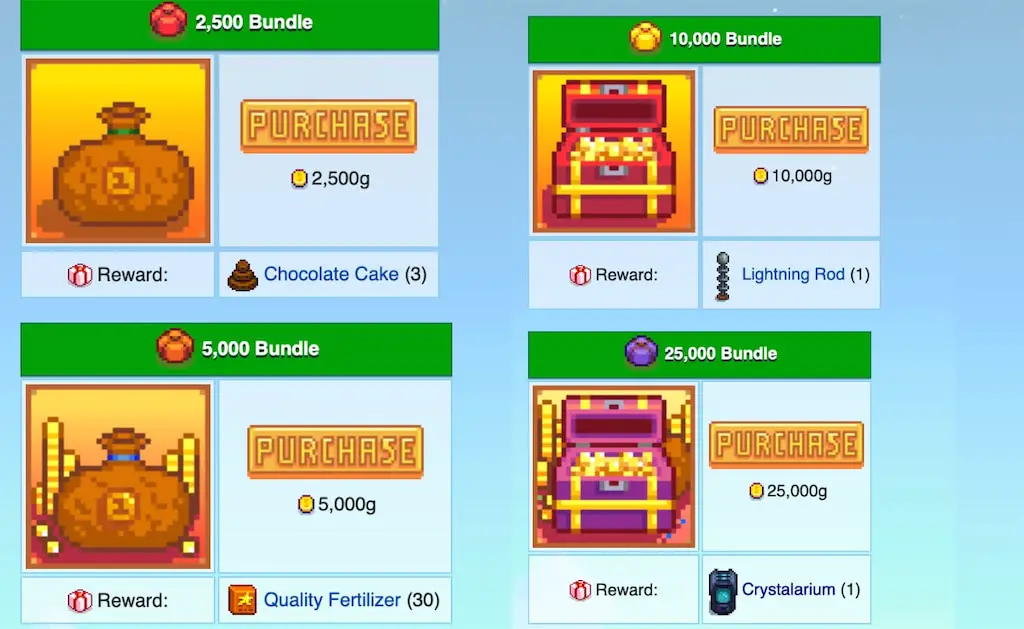
Of course, this is an ideal scenario. If you feel unable to complete the Community Center, try unlocking the Desert and Greenhouse first. To unlock the Desert, you need to complete the Vault Bundle, which only requires money. The Greenhouse Bundle requires high-quality crops from spring, summer, and fall, along with animal and artisan goods. This is much easier than completing all bundles.
Planting Starfruit Seeds
In winter, you can buy Starfruit seeds in the Desert and plant them in the Greenhouse for a profitable development. But what if the Greenhouse isn’t unlocked? There are two scenarios: having access to the Desert or not. If you have access to the Desert, focus on the Desert Mine to gather ore and create Kegs. Extra Iridium Ore can be sold for profit. If you’re unsure how to mine, check out my Desert Mine tutorial. If you don’t have access to the Desert, don’t panic. Assess your progress and follow the next steps.
Winter Foraging Bundle

Take a look at where you are in the game and follow these strategies for a successful winter season. First and foremost, make the most of foraging during winter. By completing the Winter Foraging Bundle, you can obtain 30 Winter Seeds, which can be planted and harvested on your farm in just seven days. Once harvested, you can obtain more foraged items and craft additional Winter Seeds. Extra Winter Roots can also be placed in a Seed Maker to produce more Winter Seeds. After converting them, check the quantity of your seeds.
Crafting Tea Saplings
Part of your harvest can be used to craft Tea Saplings for selling, while the rest can be planted again. The Tea Sapling recipe is unlocked through Caroline’s two-heart event, and each sapling sells for 500 gold. Although it may not be a significant amount, it still contributes to your income.
Spending More Time Mining
The second strategy is to spend more time mining. If you haven’t reached level 120 of the mines, keep pushing forward. Those who have reached level 120 should focus on gathering more ores. Some ores can be used to upgrade tools, chicken coops, and barns, while others can be used to craft kegs. The more resources you stock up on, the better.
Storing Plenty of Wood and Stone
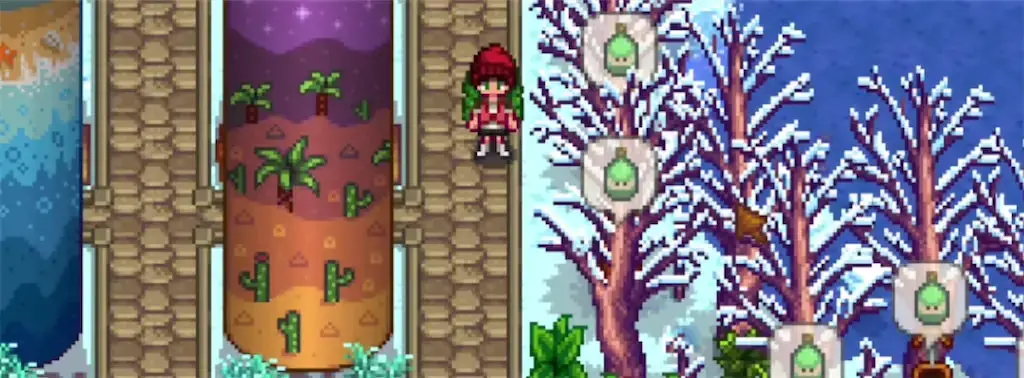
The third strategy is to store plenty of wood and stone. Trees won’t grow in winter, but Tappers can still work on Oak Trees. Avoid cutting down Oak Trees on your farm and instead craft more Tappers to collect Oak Resin for making kegs. You can chop down other trees but consider purchasing resources from Robin. In the first year, wood costs 10 gold at Robin’s shop, but the price increases to 50 gold in the second year. Stones can be gathered from mining, but if you need more, you can buy them from Robin. The cost is 20 gold in the first year and increases to 100 gold in the second year, so buy early to save money.
Fishing to Earn Money
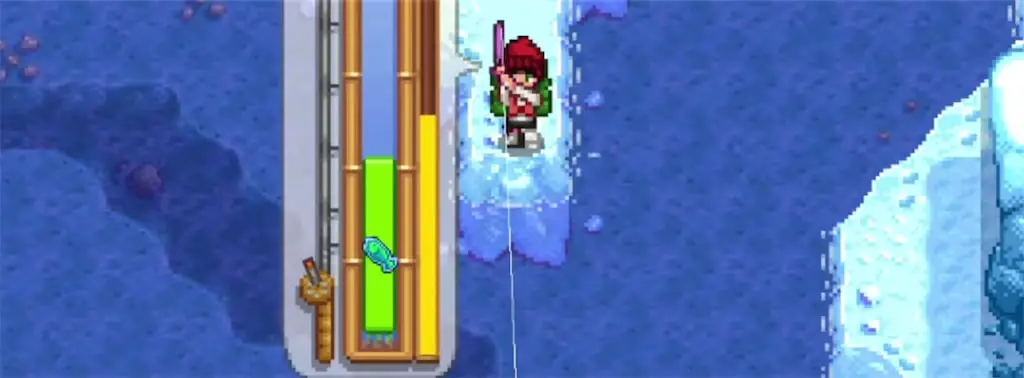
Lastly, spend time fishing to earn money, especially when funds are low and other forms of income are limited. Once you have accumulated enough initial capital, follow the above strategies to expand your farm progressively. If you don’t enjoy fishing, consider installing a mod to skip the fishing mini-game. Although it may affect the game’s balance, it can significantly enhance your gaming experience. If you’re worried about balance, practice fishing to improve your skills. Remember, the primary goal of playing Stardew Valley is to have fun and entertain yourself.
In conclusion, developing your farm during the first winter season in Stardew Valley requires planning and strategizing. Completing the Community Center Bundle or Joja Community Development Form before winter arrives can set you up for success. Unlocking the Greenhouse, Desert, and Ginger Island can allow you to plant crops all year round and gather essential resources. If these goals are too ambitious, focusing on foraging, mining, and stocking up on wood and stone can still lead to a successful winter season. And remember, fishing can be a great way to earn money and enhance your gaming experience. Have fun and enjoy your winter season in Stardew Valley!